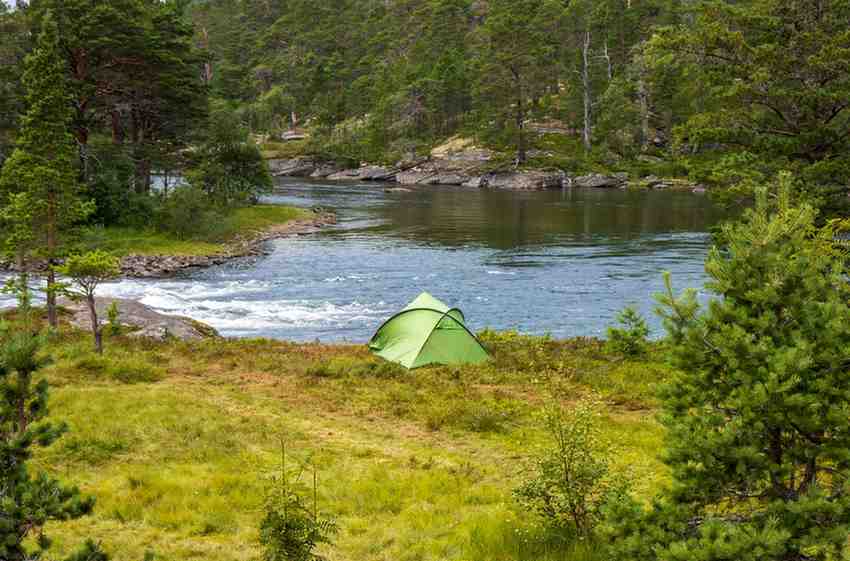Solo Camping: The Ultimate Guide to Going Off the Grid Alone
There’s something liberating about setting out into the wilderness alone. No itinerary, no one to answer to, just you, the trees, and the sound of your own footsteps. Solo camping isn’t just an outdoor activity—it’s a deeply personal experience that tests your resilience, sharpens your survival skills, and offers a rare kind of solitude most people never experience.
Whether you’re looking for quiet reflection, adventure, or simply a break from digital noise, solo camping can deliver. But it also comes with unique risks and responsibilities. This guide walks you through what it’s really like to camp alone, how to prepare, and whether it’s the right fit for your next outdoor trip.
Why Go Solo? The Power of Camping Alone
People choose solo camping for a variety of reasons—some intentional, some spontaneous. Here are a few of the most common motivations:
- Freedom to set your pace: No group consensus needed—you eat, sleep, and hike on your terms.
- Clarity and mental reset: Time alone in nature has proven benefits for reducing stress and increasing focus.
- Skill-building: Navigating terrain, building a fire, setting up shelter—all without assistance—builds real confidence.
- Minimal social pressure: No small talk, no worrying about whether everyone’s having fun.
Solo camping isn’t for everyone—but for those who try it, it often becomes a ritual they return to again and again.
Solo Camping vs Group Camping: What’s Different?
| Aspect | Solo Camping | Group Camping |
|---|---|---|
| Pace | Flexible, self-determined | Needs coordination |
| Safety | Greater personal responsibility | Shared tasks and backup in emergencies |
| Gear | Lightweight, minimal | Can split heavy gear |
| Experience | Introspective, immersive | Social, collaborative |
While group camping is often easier logistically, solo camping offers depth and stillness that’s hard to find with others around.
Essential Solo Camping Gear
When you’re solo, there’s no backup. Your gear must be light enough to carry, but comprehensive enough to handle common problems. Here’s a checklist:
- 1-person tent or hammock with rainfly
- Sleeping bag (appropriate for the season)
- Insulated sleeping pad
- Backpacking stove and fuel
- Water filtration system (filter, tablets, or UV purifier)
- First-aid kit (customized for solo use)
- Map, compass, or GPS device (never rely on phone only)
- Multi-tool or knife
- Headlamp with extra batteries
- Bear spray (if applicable) and food storage solution (bear canister or bag)
Consider doing a few test runs close to home to see how you manage packing, cooking, and sleeping before venturing into remote areas.
Safety First: Managing Risks While Camping Alone
Going solo means taking full responsibility for your safety. Preparation is key. Here’s what to keep in mind:
- Tell someone: Always share your route and return time with a trusted friend or family member.
- Know your limits: Don’t attempt overly technical hikes or remote locations until you’ve gained experience.
- Check weather: Weather can change quickly—pack accordingly and have a backup plan.
- Stay on trail: Navigation errors are a leading cause of backcountry rescues.
- Pack emergency gear: A whistle, signal mirror, and firestarter could save your life.
Best Locations for First-Time Solo Campers
Ease into solo camping with manageable, well-marked locations. Look for:
- State parks or national forests with established campsites
- Areas with ranger stations or other campers nearby
- Day-hike accessible zones (1–3 miles from trailhead)
- Flat, open areas with water sources and good visibility
Apps like AllTrails, Gaia GPS, and offline maps can help you research and plan ahead.
Pros of Solo Camping
- Self-reliance: Every decision is yours. That can be deeply empowering.
- Immersive nature connection: You’re more observant when you’re not distracted by conversation.
- Creative freedom: Journal, sketch, photograph—without needing to explain your process to anyone.
- No compromises: You camp exactly the way you want to.
Cons of Solo Camping
- Loneliness: Even confident campers can feel isolated at night.
- Increased vulnerability: Accidents, wildlife, and gear failures can be harder to manage alone.
- Fear factor: Night sounds and unfamiliar settings can trigger anxiety.
- No shared labor: All the setup, cooking, and teardown is on you.
Solo Camping FAQs
Is solo camping safe? With proper planning, yes. Start with shorter trips in populated areas and always let someone know your location and return plan. How do I deal with fear while solo camping? Stick to familiar spots at first. Practice deep breathing, bring comfort items, and remind yourself of your skills and preparation. Do I need special permits? Some parks require backcountry permits. Always check with local rangers or park websites before heading out. What if something goes wrong? That’s why you carry emergency gear, share your trip plan, and start slow. A personal locator beacon (PLB) or GPS messenger is wise for remote trips.
Pro Tips from Experienced Solo Campers
- Set up before dark: It’s much easier to pitch a tent and prep dinner while there’s still light.
- Stay busy: Bring a journal, a book, or small creative tools to avoid overthinking during downtime.
- Use earplugs or white noise: If nighttime forest sounds keep you up, dampen them with low-tech solutions.
- Pack extra snacks: Solo camping often involves more calorie burn than expected.
Final Thoughts
Solo camping isn’t about proving toughness. It’s about finding space for yourself—mentally, emotionally, and physically. It teaches patience, presence, and problem-solving. Whether you do it once or make it part of your lifestyle, there’s deep value in learning how to be alone in the wild.
Start small, stay safe, and be prepared. You might be surprised just how much clarity and strength you gain from one night under the stars—all by yourself.
